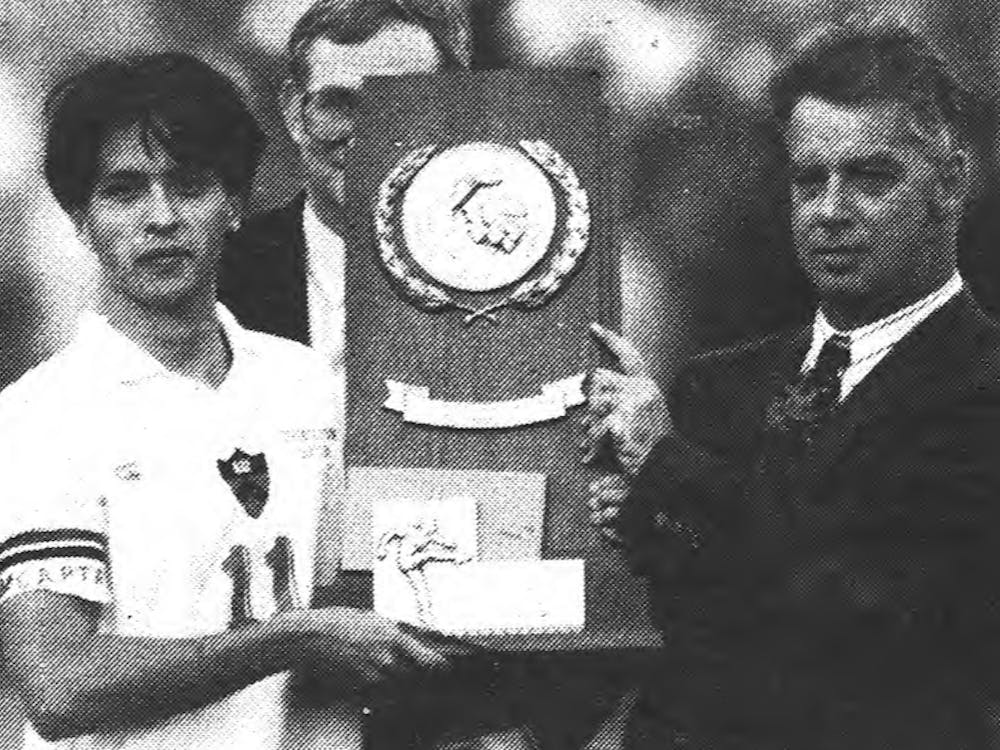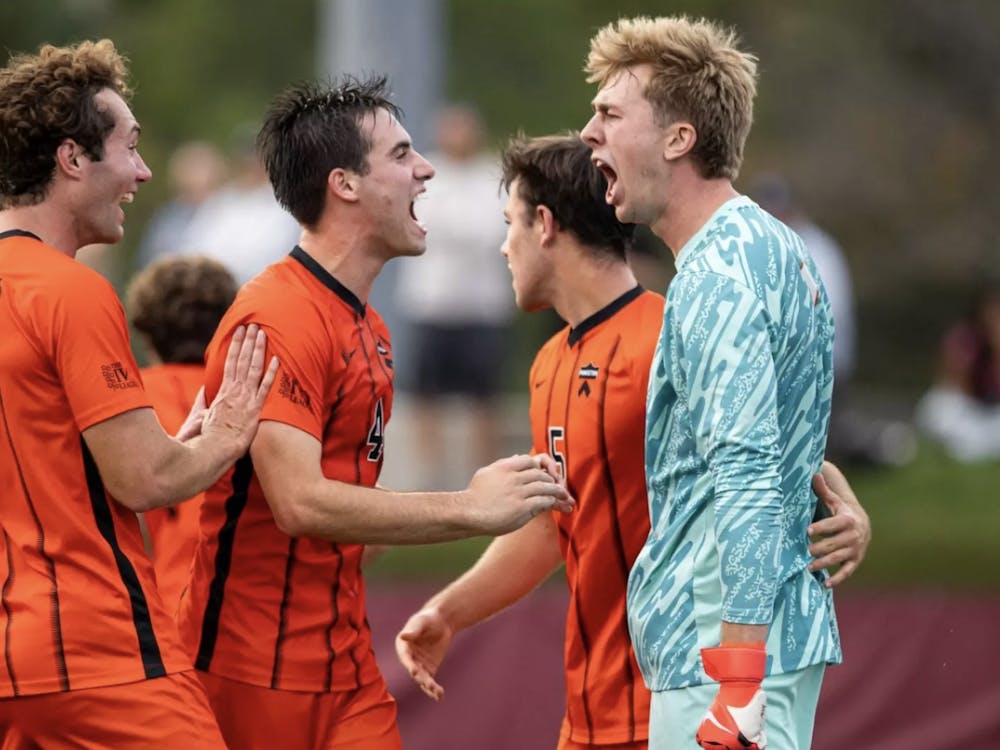“One of the great tragedies in Russian literature,” Chloe Kitzinger said recently to a lecture hall full of students and professors in HUM 217: Interdisciplinary Approaches to Western Culture I: History, Philosophy, and Religion, “is that Dostoyevsky and Tolstoy never met, although they had several acquaintances in common and even close friends.” Kitzinger is a member of the Princeton Society of Fellows in the Liberal Arts, specializing in Slavic Languages and Literature.
One of the great strengths of the HUM sequence (short for the Humanities Sequence, encompassing HUM 216: Interdisciplinary Approaches to Western Culture I: Literature and the Arts and 217) is that there the two authors meet, as Kitzinger enlightens her students by comparing the impulses, focuses, interests, and conditions of the Dostoyevsky and Tolstoy. And it doesn’t stop there — in this 21st-century Princeton classroom, the 19th-century Russian contemporaries also meet the classical, medieval, and Renaissance writers whom the students have studied over the past year, Kitzinger explained.
According to the University’s Humanistic Studies website, the sequence “is a team-taught, double-credit, super course that examines Western history, philosophy, and literature from antiquity to the 20th century.” This year, it celebrates its 25th anniversary.
Put simply, “the HUM sequence is sort of like an emergency recovery plan,” according to Will Nolan ’19, who took the sequence during his freshman year.
Nolan said that some, but not all, high schools give a foundation in classical texts in Ancient Greece and Ancient Rome. “HUM is sort of a catch up course for people who didn’t get that in high school,” he noted.
“Before you can begin to answer questions about where we are today, what direction our society is headed, those kinds of things (which are super pertinent, and present, and relevant), you sort of have to get the foundation first. And I think that’s what HUM’s trying to accomplish,” Nolan said.
Yelena Baraz, an associate professor of classics at the University who has taught the course since 2012, said that the course gives students a synoptic overview of the Western tradition —“a slice of it.”
Baraz is an incoming Behrman Professor in the Humanities.
“That’s one of the things the students gain,” Baraz said. “They get the sense of continuity and tradition, and they see how the texts connect with each other.”
In addition to operating as a sweeping introduction to Western tradition, the HUM sequence is also a naturally interdisciplinary endeavor, connecting not only Tolstoy to his contemporary, Dostoevsky, but also to both of their predecessors and to different perspectives on their work.
“Teaching with people who have a different set of critical terms from you, what’s observed is just different,” explained Esther Schor, professor of English and inaugural Behrman Professor in the Council of the Humanities. Schor has taught the course for five years.
“It’s invariably illuminating. We refer to each other’s lectures in our lectures. When I write a lecture I’m always thinking, ‘What did Dan Garber say about Machiavelli? What did Michael Gordin say about Marx?’” Schor said.

Schor said that she and other professors encourage students to think constantly and draw connections. “In precepts, they say, ‘A few months ago, we read this, but I didn’t realize until now what the implications were.’ So they’re also reaching back,” he explained.
Nolan noted that the HUM sequence is reading-intensive, sometimes as much as 500 pages per week. He said that some criticize the course as too wide or too fast an approach, not going deep enough into the particulars of the great works that it covers.
“When you try to read 75 books in two 12-week semesters, it’s bound to be just a survey course,” Nolan said. “[That] is all it claims to be. And so in many ways it’s just an introduction to a lot of these works.”
“But,” he maintained, “it is an important introduction. You’ve got to start somewhere, and returning to those texts later in other courses, I’m actually more familiar with them than I realize.”
Matthew Igoe ’20, who has taken the sequence this year, said that he believes sometimes students are frustrated with the sequence because it moves quickly, covering a vast amount of material in little time.
“But I’m going to be a humanities major and I think that when I do encounter [these texts], I’m not only going to have an initial understanding of them, but I’m also going to have a sense of where they fit in their historical context and in the Western tradition more broadly,” Igoe said.
Besides, Nolan said, “Since HUM, no reading at Princeton has scared me.”
And even with such a demanding load, the sequence’s enrollment continues to grow from year to year.
“Students who are looking for a good value in their education — and why shouldn’t they be? — know that they’re getting it here,” Schor said.
For starters, students emerge with a sense of community. After spending two semesters together, “they get to know one another very well; they even get to know how one another thinks,” Schor said. “It means that they’ve internalized other perspectives and other ways of thinking about things.”
“I think students also come away with enormous confidence,” Schor added, “which is never a bad thing in life or at Princeton.”
This confidence is natural after the HUM sequence, Schor explained. “[Students] have read a body of work; they have written about 10 texts in-depth; they’ve been examined on dozens of others; they’ve discussed many others. They have a frame of reference that’s deep and broad and historically rich.”







